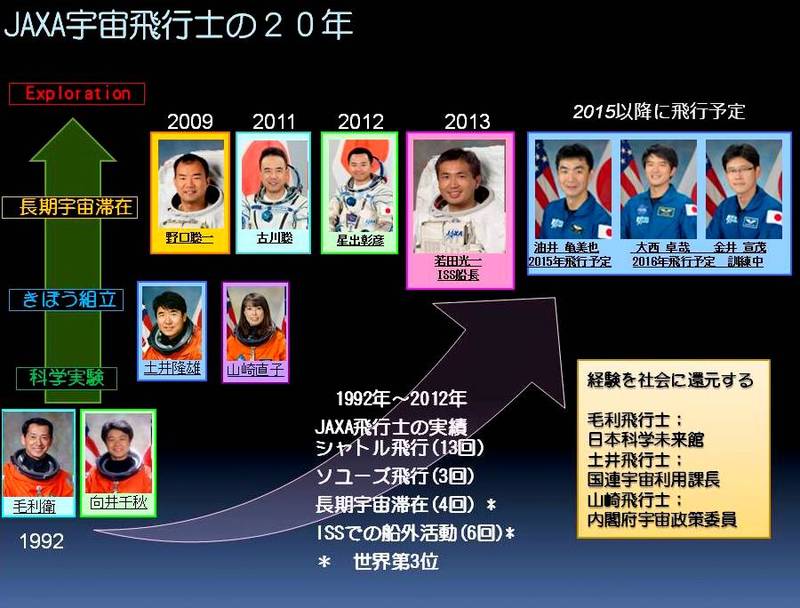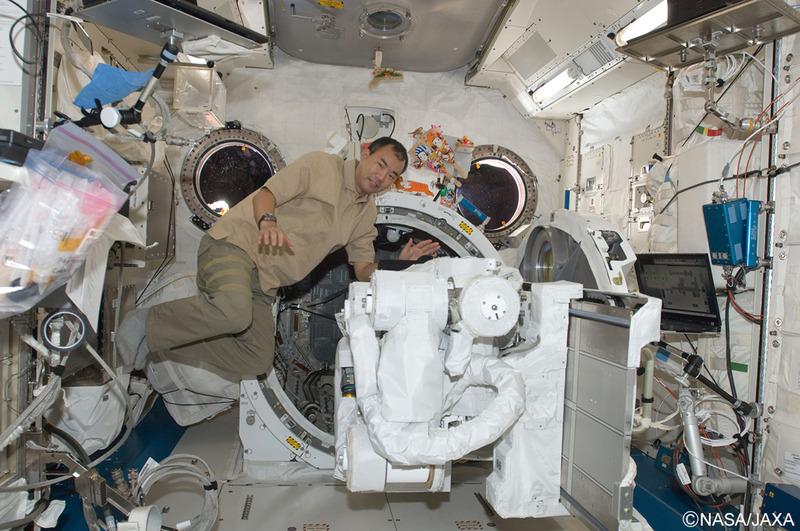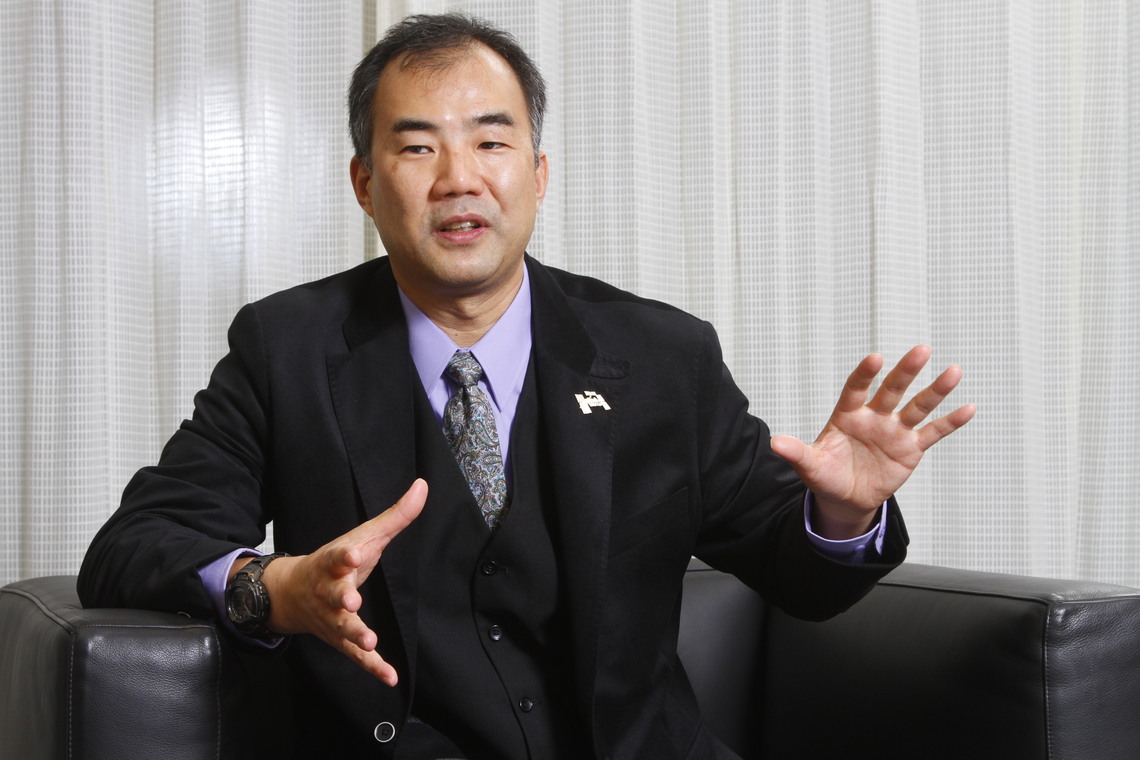"The Role of 21st Century Astronauts and the Power to Shape the Future
― Aiming to Contribute to the International Community" Part 1
JAXA Astronaut Soichi Noguchi
Currently orbiting Earth 400 kilometers above, Astronaut Koichi Wakata is aboard the International Space Station (ISS). During the latter half of his six-month long-duration stay, from March to May this year, he will fulfill his duties as Commander, leading a crew of five astronauts from Russia and the United States. Through manned space development, Japanese astronauts have accumulated extensive experience, finally reaching the era where they lead the "space station" operated through the cooperation of 15 nations worldwide. With new Japanese mission crew flights scheduled for the future, what roles and qualities will be required of astronauts going forward? We spoke with Astronaut Soichi Noguchi, currently serving as the Astronaut Group Leader at the Japan Aerospace Exploration Agency (JAXA).
Toward an Era of Japanese Leadership
It has been over 20 years since Mamoru Mohri became the first Japanese astronaut to board the Space Shuttle and travel to space. Since then, several Japanese astronauts, including myself, have flown to space and conducted various experiments in microgravity. Since the start of operations for Japan's Kibo experiment module on the ISS in 2008, we have not only participated in the assembly of the ISS but also operated robotic arms for experiments and maintenance tasks, performed spacewalks, and accumulated experience in long-term stays in space.

©JAXA/NASA Mouri, Mukai, Doi, Yamazaki, Noguchi, Wakata, Yui, Onishi, Kanai
©JAXA/GCTC Furukawa, Hoshide (Titles omitted)
*Source: Mr. Noguchi
And now, Astronaut Wakata, currently aboard the ISS, is poised to become the first Japanese Commander during the latter half of his approximately six-month stay. From operating robotic arms and conducting spacewalks to commanding missions—the highest-level duties for astronauts—Japanese astronauts have now experienced nearly all core tasks required in human spaceflight and activities. It's fair to say they are increasingly taking a leading position among the world's astronauts, both in terms of hardware and soft power.

Mr. Noguchi performing an EVA during his first ISS stay (August 2005)
Role as a Spokesperson
Many people likely imagine astronauts as individuals who undergo grueling training before flight and then meticulously execute strictly defined tasks once aboard spacecraft. However, this represents only part of an astronaut's role. You've probably seen, either directly or through media, astronauts explaining Japan's reasons for pursuing space or passionately speaking to children about space. Personally, I also continue to share updates via Twitter, and thanks to everyone's support, I have about 500,000 followers reading my posts. Beyond these public relations and outreach activities, supporting the training of junior and fellow astronauts, as well as collaborating with private companies involved in domestic space-related ventures through development support activities, are also important duties. Furthermore, a role that will become increasingly significant for Japanese astronauts is serving as spokespersons for JAXA's future business activities.
Last year, at a UN symposium in Dubai, United Arab Emirates, the topic of discussion was the expected surge in demand for nanosatellites. Nanosatellites are about 10 centimeters square, but technological advances now enable them to possess capabilities once reserved for commercial satellites. Furthermore, development and launch costs can be significantly reduced.
There is particularly high demand in developing countries like those in the Middle East and Africa, where economies are growing. One of our roles is to showcase JAXA's capabilities at gatherings of space development professionals from these nations. As you know, in 2012, astronaut Akihiko Hoshide deployed a microsatellite using the robotic arm of Japan's Kounotori space station resupply spacecraft. During his current stay, Astronaut Wakata also deployed a microsatellite jointly developed by Vietnam and the University of Tokyo. Alongside our highly successful rocket launch technology, Japan's microsatellite development and deployment technology is now arguably among the world's best.
[ Continued in Part 2 ]

Mr. Noguchi working in the Kibo experiment module on the ISS (January 2010)





